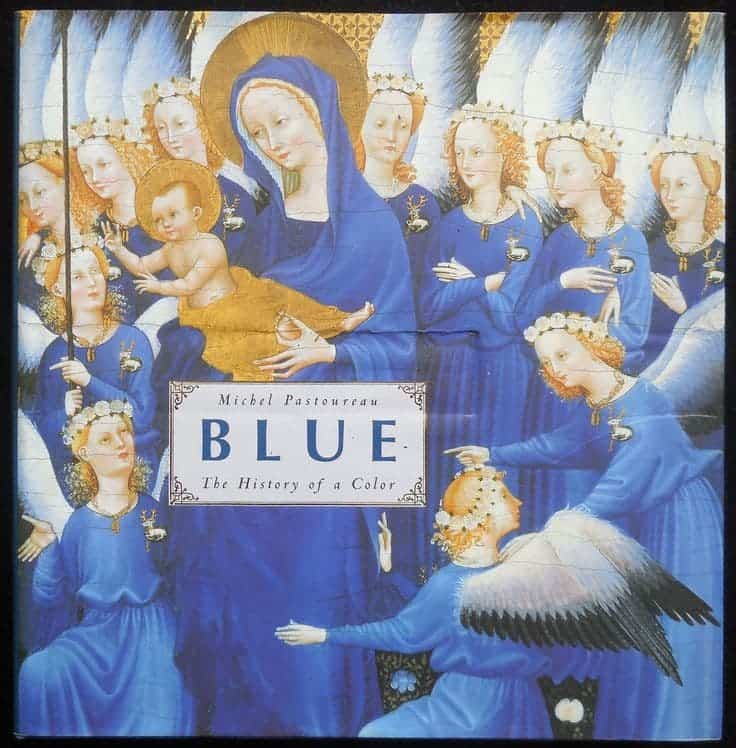I’d never thought I’d say this, but this is a book about a color — and you have to read it!

Michel Pastoureau
Princeton University Press // 216 pp
Buy on Amazon
Have you ever wanted to visit a museum, but didn’t want all the hassle, or didn’t have the time? Blue reads just like being in a museum. Page by page, you get to walk through its long halls, explore its contents, and learn things you never knew you needed to know before. For instance, did you know that in Antiquity, blue was a laughable or even a dangerous color? The ancient Greeks may have not even had a word for ‘blue’ and for the Romans, blue was the color of barbarians. Even having blue eyes was considered an extremely unpleasant feature. So why is blue now the world’s favorite color — and has been for more than a century?
I’ll admit — when I first started reading the book, I was a bit skeptical. After all, it’s a book about a color — how interesting can it be? Boy, was I wrong! Non-fiction books often fall into the trap of sacrificing being engaging in order to add as much information as possible. But Blue doesn’t do this.
The truth is that Blue, like some of Pastoureau’s books (which are, you’ve guessed it, about other colors), is a new way of looking at history. We look at history through the lens of a country, or a group of people, but what if we looked through the lens of a color? We take colors for granted today because we’re so spoiled with choice. We choose whatever color we want for our clothes our cars, our house — and it doesn’t really cost more. Color is simply an option, and we have all the options in the world available to us. But it wasn’t always like this: in humanity’s earlier days, color was a luxury, and sometimes simply unattainable. It was used to depict strong symbolism and even signify social status. Fierce battles were fought over dyes and colors and in medieval times, producers of red dyes would pay painters to depict demons as blue — thus fending off competition.
The production of color was also strictly regulated. It’s not like you could just go and produce whatever color or dye you wanted. If you wanted to sell it, you needed a license, and a license wasn’t easy to obtain. Because the dye fabrication process was so incredibly work-intensive and pigment specific, most producers would be forced to only stick to a few colors (and some related mixtures). This led to fierce rivalries between the red and the blue dye makers, which lasted for centuries. Blue also became a pivotal point in the Romantic movement and played a key role in the French Revolution’s symbolism. Nowadays, it’s strongly associated with serenity and peace — and let’s face it, who could ever imagine a pair of jeans without associating them with blue?
For the longest time, blue was the renegade of colors, ignored or shunned, and yet it’s now the world’s favorite color, according to almost all surveys. It went from a seemingly non-existent color (up to the point where some have even wondered if ancient people could see blue) to stirring fierce disputes, to becoming the color to wear.
It’s been a long journey, and blue’s story is one that’s worth reading. While I suspect that some of Pastoureau’s sharpness might have been dulled by translation, the book is extremely informative, and it does so while also being engaging. I’d never thought I’d say this, but I want to read more about these colors.






